Our final trip for our trip away, on Monday 12th June 2017 was the Padthaway Conservation Park 5CP-169 & VKFF-0924. The park is located about 287 km south east of Adelaide.
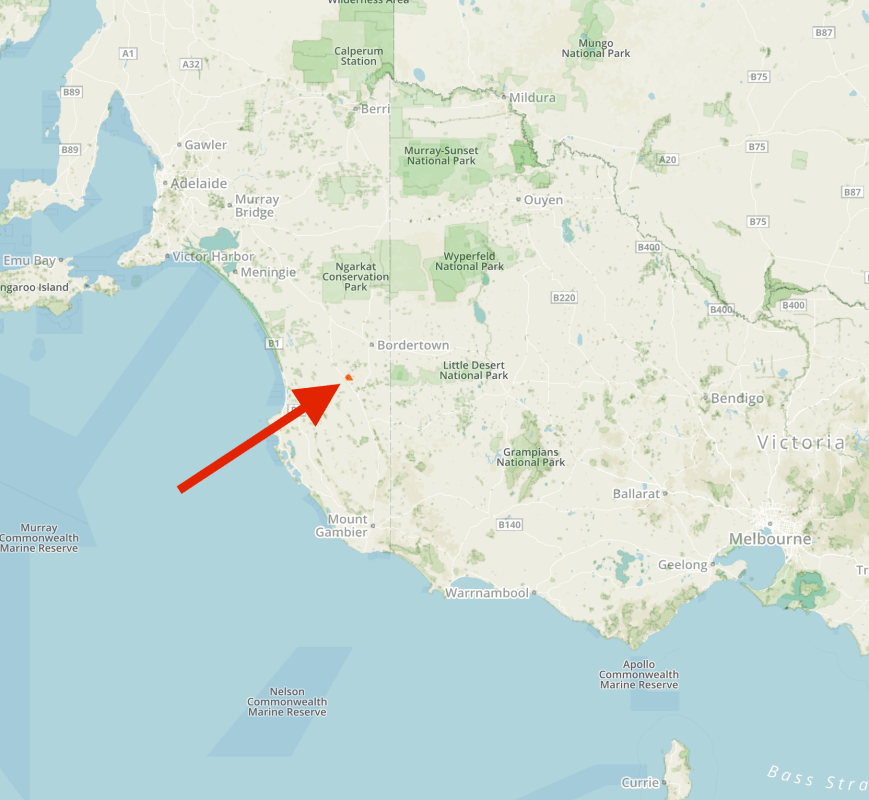
Map showing the location of the Padthaway Conservation Park. Map courtesy of Protected Planet.
We travelled through the little town of Padthaway which is at the centre of the Padthaway wine growing region which is 62 km long and 8 km wide, with the Riddoch Highway running through the middle. The park is well signposted from the Highway.

The park is situated just 2 km north east of the town of Padthaway. We accessed the park via Vogelsang Road.
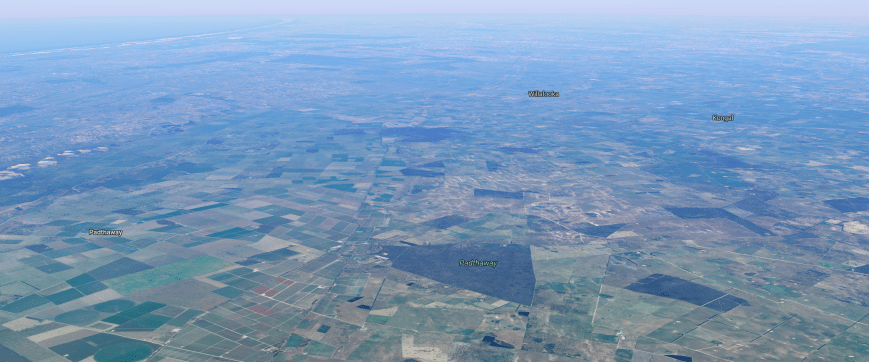
Aerial view of the park. Image courtesy of Google maps
The park which preserves a remnant block of native vegetation, was first proclaimed as the Padthaway National Park on 18th Match 1971. It became the Padthaway Conservation Park on 27th April 1972. The park consists of South Australian Blue Gum and Rough barked Manna Gum woodland, and Brown Stringybark low open forest.
More than 95 species of bird have been recorded in the park including Rainbow Lorikeet, White-throated Treecreeper, Superb Fairywren, Brown Thornbill, New Holland Honeyeater, Red Wattlebird, Mallee Ringneck, Blue-winged Parrot, Fuscous Honeyeater, Black-capped Sittella, Restless Flycatcher, & Eastern Yellow Robin.
Padthaway was the name of the original pastoral station which was established near the town in 1847 by a successful Scottish businessman, Robert Lawson. In 1882 the Padthaway Estate Homestead was built by Eliza and Robert Lawson. In 1952 Padthaway became the centre of a soldier settlement scheme. The first vineyards were planted in the region in 1968 and today Padthaway is a top wine-producing region.
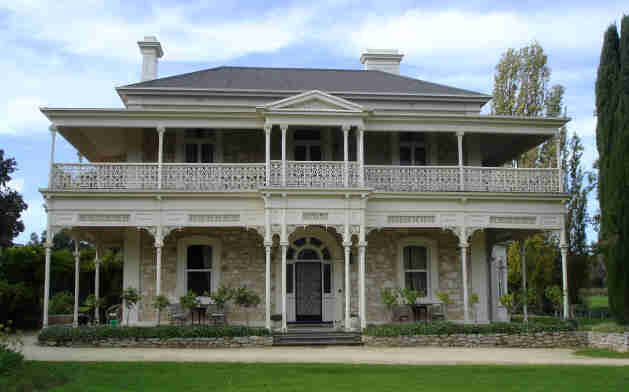
This was to be another unique park for both Marija and I, for the World Wide Flora Fauna (WWFF) program. I had activated the park back in 2014 as part of the VK5 National & Conservation Parks Award.
We set up in a clearing just off a track which ran from Vogelsang Road. We ran our normal operating equipment for this activation: the Yaesu Ft-857d (on 10w for Marija and 40w for me), and the 80/40/20m linked dipole.
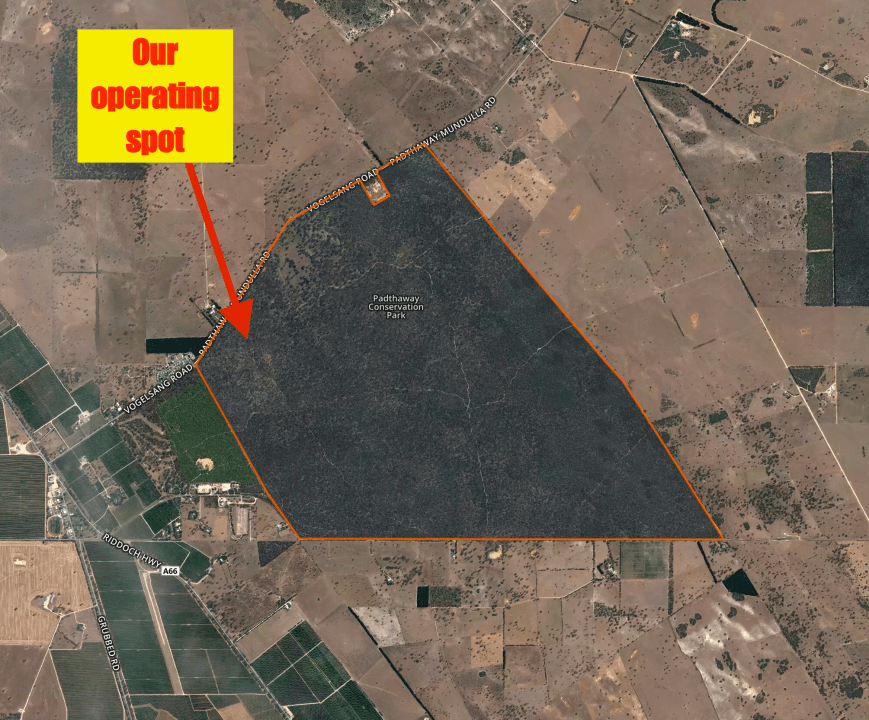
As is normally the case when Marija and I activate parks together, Marija started off on the mic first. Marija called CQ on 7.135 and this was answered by Jonathan VK7JON, followed by Dennis VK2HHA, Geoff VK3SQ, and Rick VK4RF/VK4HA. It took Marija just 9 minutes to reach contact number 10, qualifying the park for VKFF. Contact number 10 was with Bill VK2KT. When Marija had 15 contacts in the log, we swapped the mic.
First taker for me was Gerard VK2NP, followed by Geoff VK3SQ, Lee VK2LEE, and then Mark VK3FOTO mobile. The 40m band was in excellent condition and had certainly improved since our activation at Glen Roy. A mini pile up soon ensued. I had contact number 10 in the log after 9 minutes, with contact number 44 after being on air for 45 minutes. I worked a total of 69 stations on 40m, until things started to slow down. This included Park to Park contacts with Rob VK4AAC/2 in Sea Acres National Park VKFF-0606, Stef VK5HSX/2 in the Paroo Darling National Park VKFF-0410, David VK2JDR/p in the Royal National Park VKFF-0435, and Gerard VK2IO/p in the Limeburners Creek National Park VKFF-0597.
I then headed over to 14.310 on the 20m band where I worked a total of 5 stations from VK2 and VK4. Sadly, no DX. To complete the activation, I called CQ on 3.610 on the 80m band. This was answered by John Vk5BJE, then Mick VK3GGG/VK3PMG, and then Geoff VK3SQ. I logged a total of 10 stations on 80m.
Whilst activating, this little fella, a Black-faced Cuckoo Shrike, showed continual interest in our activation. He continually flew from tree to tree above our operating spot. The Black-faced Cuckoo Shrike has a very distinctive flight pattern. It gives a few flaps of its wings, then glides with them by its side for a second or two. During this glide, the bird loses elevation until it flaps again, giving the flight is characteristic undulating pattern.
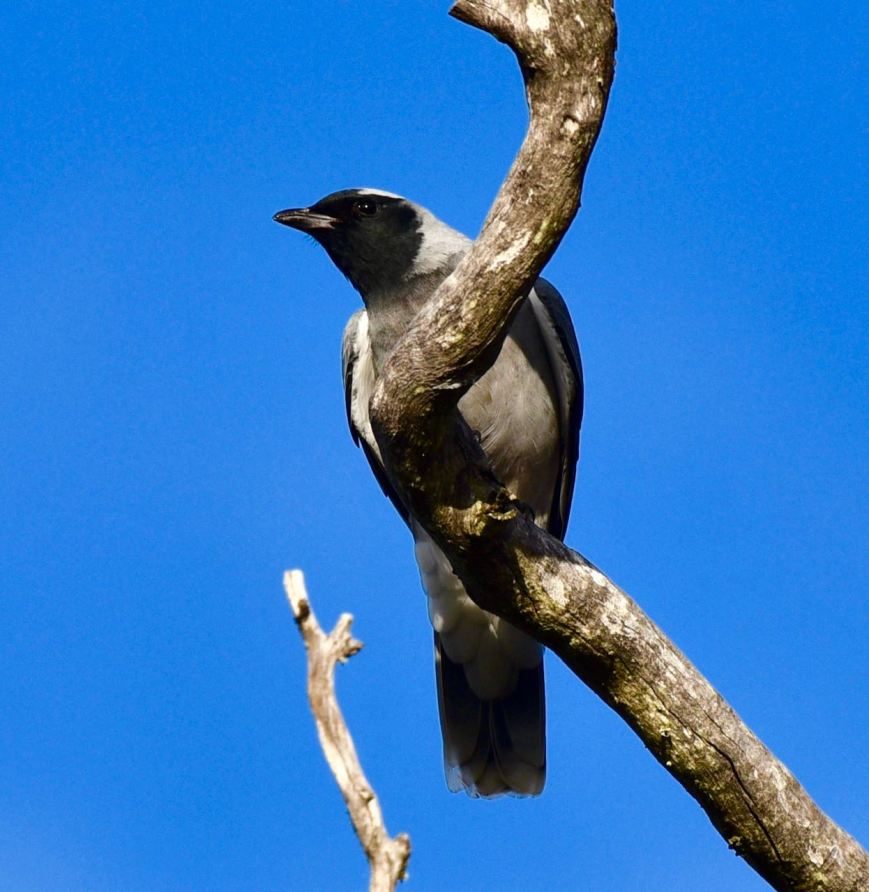
The Black-faced Cuckoo Shrike who showed great interest in us.
This was another successful activation. Marija had 19 contacts in the log, while I had 84. This included 10 Park to Park contacts between the two of us.
Marija worked the following stations on 40m SSB:-
- VK7JON
- VK2HHA
- VK3SQ
- VK4RF
- VK4HA
- VK5FANA
- VK2LEE
- VK3PF
- VK2GAZ
- VK2KT
- VK3ZPF
- VK3PNG
- VK2VW
- VK3CWF
- VK2NP
- VK4AAC/2 (Sea Acres National Park VKFF-0606)
- VK5HSX/2 (Paroo Darling National Park VKFF-0410)
- VK2JDR/p (Royal National Park VKFF-0435)
- VK2IO/p (Limeburners Creek National Park VKFF-0597)
I worked the following stations on 40m SSB:-
- VK2NP
- VK3SQ
- VK2LEE
- VK3FOTO
- VK2YK
- VK4AAC/2 (Sea Acres National Park VKFF-0606)
- VK2CTB/p
- VK7FOLK/m
- VK7NWT
- VK2HHA
- VK2KT
- VK4RF
- VK4HA
- VK2KYO
- VK5KLV
- VK3CM
- VK2KDP
- VK1AD
- VK3PF
- VK3MVP
- VK4HNS
- VK5HSX/2 (Paroo Darling National Park VKFF-0410)
- VK3MCK
- VK3ZPF
- VK3NCR
- VK3EF
- VK2YX
- VKa1AT
- VK2LAX
- VK3ELH
- VK5ZEA
- VK3FPSR
- VK3TQ
- VK7QP
- VK3ANL
- VK5ATN
- VK5APV/p
- VK2FBJM
- VK4ZL
- VK2ALF/m
- VK2NEO
- VK4PDX
- VK3SFG
- VK3NGD/m
- VK3FSPG
- VK3MPR
- VK3PAT
- VK7FRJG
- VK2LX
- VK7ZGK
- VK3ZMD
- VK2JDR/p (Royal National Park VKFF-0435)
- VK2SVN
- VK4FADW
- VK4FE
- VK2GPT
- VK7ALB
- VK3KMH
- VK2MMM
- VK3GTS
- VK7VZ
- VK2QK
- VK4TJ
- VK3MRH
- VK3HN
- ZL1TM
- VK2IO/p (Limeburners Creek National Park VKFF-0597)
- VK3FORD
- VK5MA/m
I worked the following stations on 20m SSB:-
- VK4BX
- VK2LEE
- VK4AAC/2 (Sea Acres National Park VKFF-0606)
- VK2NP
- VK2IO/p (Limeburners Creek National Park VKFF-0597)
I worked the following stations on 80m SSB:-
- VK5BJE
- VK3GGG
- VK3PMG
- VK3SQ
- VK5FANA
- VK3DMD
- VK2NP
- VK2LEE
- VK5QI
- VK5KDK
After packing up, we continued on our journey home, stopping off at the Riverside Hotel at Tailem Bend for tea. Marija enjoyed a nice curry, while I had a beautiful steak and a bundy & coke or two. It was the end of a great few days away.
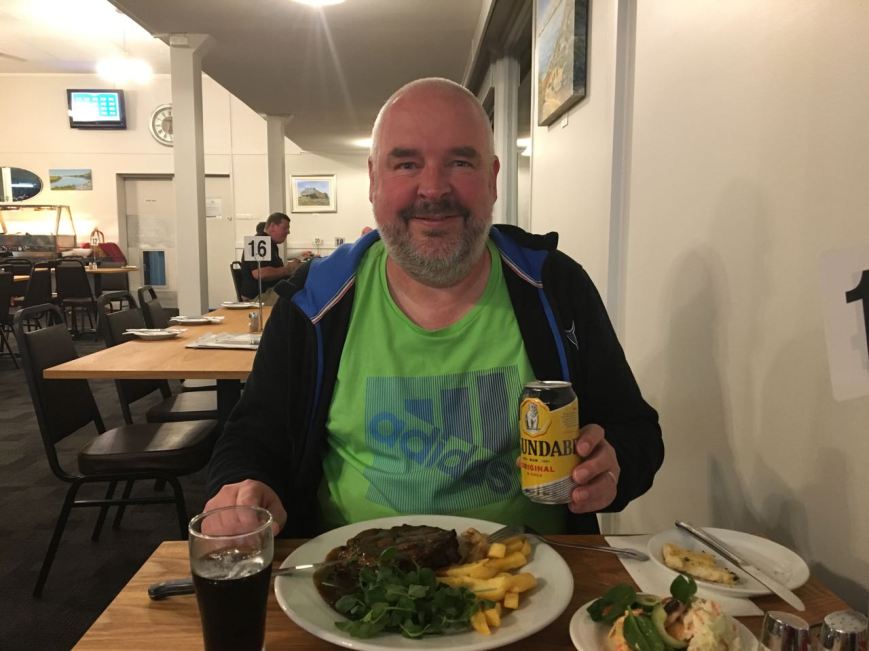
References.
Birds SA, 2017, <http://www.birdssa.asn.au/location/padthaway-conservation-park/>, viewed 15th June 2017
Birdlife, 2017, <http://www.birdlife.org.au/bird-profile/black-faced-cuckoo-shrike>, viewed 15th June 2017
Padthaway Wine Region, 2017, <http://www.padthawaywineregion.com/>, viewed 15th June 2017










Hi Paul
I enjoyed my visit to Padthaway Conservation Park a while back now and your entry has brought back some of the memories. I reckon we were in a very similar part of the park to you. And a great shot of the black-faced cuckoo shrike!
Cheers
John D
VK5BJE/VK5PF
G’day John,
That cuckoo shrike showed a real interest in us. He kept flying from branch to branch above where we were operating from. There are a few 4WD tracks through this park, so when I go back I will have to do a little more exploring.
73,
Paul VK5PAS.
The weather cleared up for this park turned out to be a nice afternoon